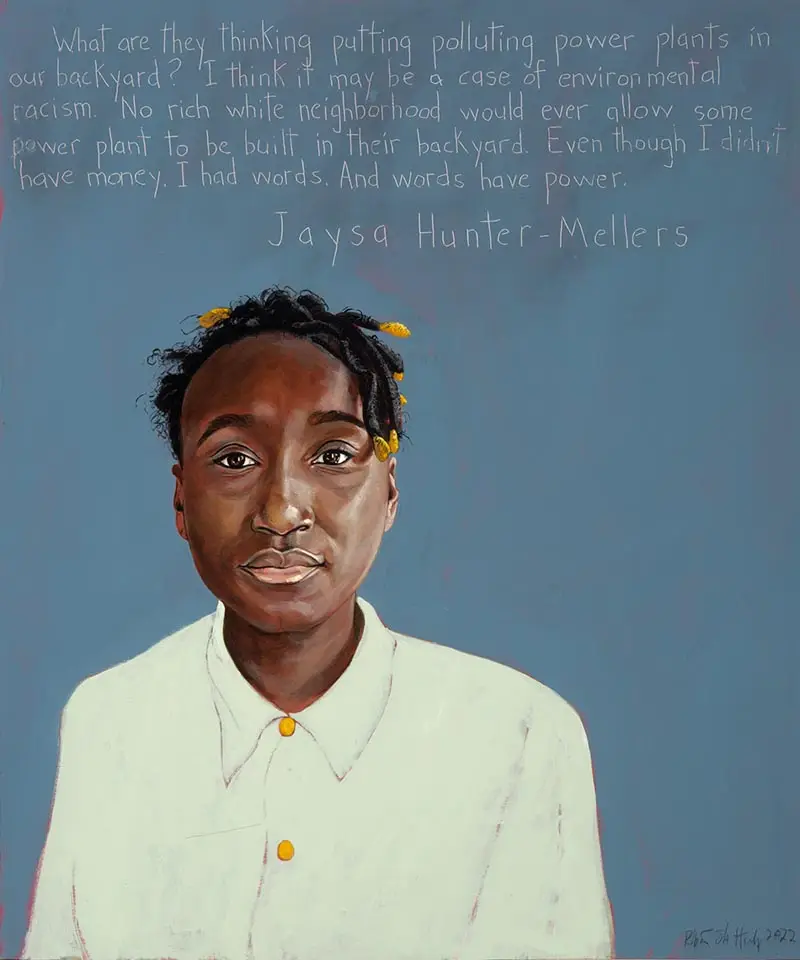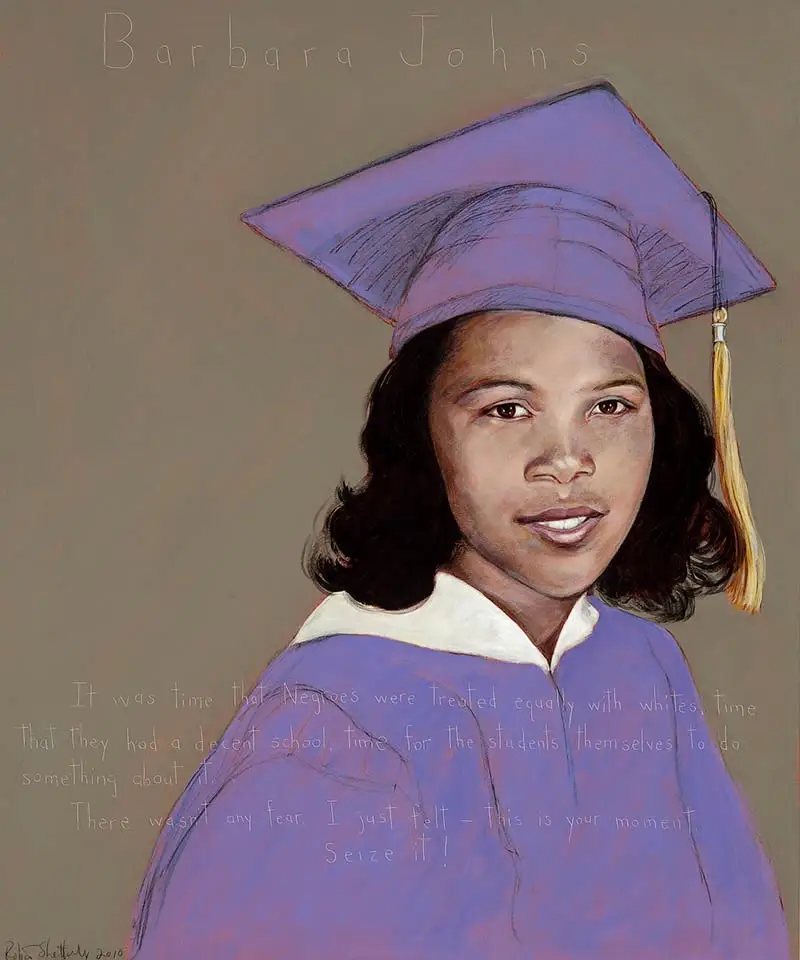What's New
Dorothy, Samantha, Claudette, Barbara and Jaysa on the Yellow Brick Road
One of the great adventures in literature and myth is that of the Hero’s Journey.
A person – in fairy tales it’s often a young prince, but really anyone – young or old, male or female, LGBTQ, of any race or ethnicity, sets out on a quest. The quest may be to rescue someone in distress, slay a dragon, discover a truth, or right an injustice. It may also be a quest for identity, the kind of testing of mettle that teaches us who we can be if we don’t give up. In the process the quest for justice and identity becomes a morality tale and a tale of inspiration. As obstacles are overcome and courage not previously known is discovered, the person on the journey becomes a hero, a model for all of us.

In the world of Americans Who Tell the Truth most of the portrait subjects can certainly be said to have completed Hero’s Journeys – Harriet Tubman, Frederick Douglass, Mother Jones, Rosa Parks, Martin Luther King, Jr., Alice Paul, Rachel Carson, Eugene Debs, etc. These luminary lives inspire millions of others. However, in Americans Who Tell the Truth we find a surprising number of girls who have embarked on such journeys and who, ultimately, have become guides and teachers for adults. As I was thinking recently about some of these young women, like Samantha Smith, Claudette Colvin, Barbara Johns and Jaysa Hunter-Mellers, it occurred to me how similar they are to Dorothy in the Wizard of Oz.
As you will remember, the Wizard of Oz opens in a moment of panic as a terrifying tornado bears down on the small, poor, desolate Kansas farm of Dorothy, Aunt Em and Uncle Henry. The adults yell for Dorothy to drop everything and run to the underground storm cellar, but Dorothy refuses until she can find her beloved dog Toto who is hiding somewhere in the house. Too late! The tornado picks up the house, Dorothy and Toto, and carries them to the imaginary realm of Oz. The more I thought about that moment in the story, the more it seemed obvious to me that L. Frank Baum, the author, created that incident not merely to isolate Dorothy and Toto so they could begin their journey in a fanciful realm, but to show us how acts of radical compassion, like Dorothy’s to risk herself to save the dog she loves, transport us into another realm of human experience, a qualitatively higher level. Thus begins Dorothy’s hero’s journey.
Along the Yellow Brick Road Dorothy meets and befriends the Scarecrow, the Tin Woodman, and the Cowardly Lion, who all decide to journey with her to Oz to petition the Great Wizard to give them a brain for the Scarecrow, a heart for the Tin Woodman, some courage for the Lion and a return trip for Dorothy to Kansas. Now we have a quadruple journey based on mutual help and friendship. Multiple scary trials confront them, and, as they defeat each evil threat, we discover what our heroes have not yet understood: the Scarecrow is very smart, the Tin Woodman has an indomitable heart, and the Lion is always able to trump his trepidation with courage. The trials of the quest are teaching them that the virtues they thought existed outside of them are, in fact, inside, ready to be discovered. As Frank Baum says, they needed to be taken apart and put back together. But the factor here, as it relates to Americans Who Tell the Truth, is that it took the leadership of a child, the girl Dorothy, to show her adult traveling companions how to access their intelligence, their compassion, and their courage. She became their teacher, their moral compass, just as Samantha did for many adults during the Cold War, as Claudette Colvin and Barbara Johns did for adult willingness to confront segregation, and Jaysa Hunter-Mellers did for environmental racism.

Claudette said, “… as a teenager, I kept thinking, Why don’t the adults around here just say something? Say it so that they know we don’t accept segregation? I knew then and I know now that, when it comes to justice, there is no easy way to get it. You can’t sugarcoat it. You have to take a stand and say, ‘This is not right.’ And I did.” The words and actions of child activists have a particular moral poignancy, clarity and power which can teach adults to act on their moral responsibilities.
Dorothy, following her quest to find a way out of this imaginary world back to the reality of Kansas, also inadvertently learns how powerful she is as she defeats two evil witches. But Oz is not so much an “imaginary” world as a hyper-reality, a fanciful place where good and evil forces clash, where souls are tested, and real character is forged.

As her companions are each attaining the virtue they yearned for, Dorothy has found her brains, her heart and her courage. Back in Kansas, she is thrilled to be home, but the hierarchy of relationship will forever be changed – all because she chose compassion over personal safety. That decision, like Samantha’s to write her letter, like Claudette’s to refuse to move on the bus, like Barbara’s to lead a school walkout, set a trajectory for real change because they have reminded adults to live up to adult responsibilities.
Dorothy, the Scarecrow, the Tin Woodman, and the Lion are at first deeply disappointed to find out the Wizard of Oz is a fraud, but even as a fraud he teaches them that they always had the power to complete their journeys themselves. As citizens of a democracy we are constantly reminded that voting is the means of social change. But we often cannot vote for the change we most need. It’s the courage of kids, who can’t yet vote, that sometimes motivates a society to change.